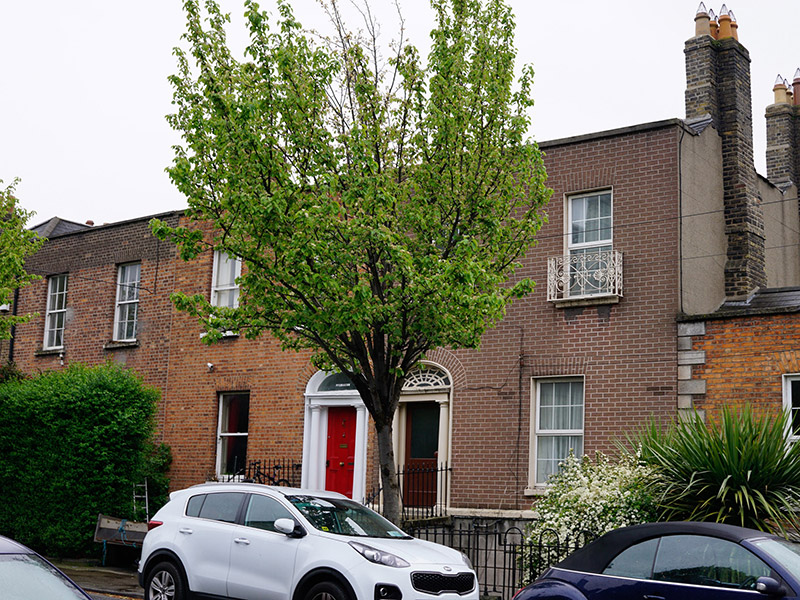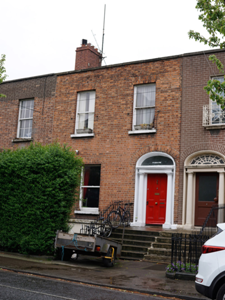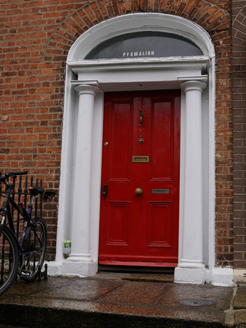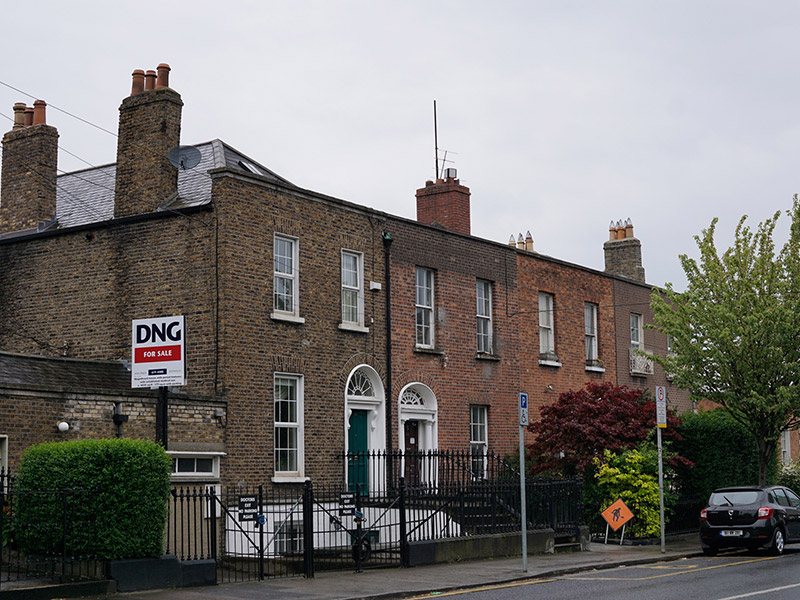Survey Data
Reg No
50110232
Rating
Regional
Categories of Special Interest
Architectural, Artistic
Original Use
House
In Use As
House
Date
1845 - 1855
Coordinates
315392, 232782
Date Recorded
30/04/2017
Date Updated
--/--/--
Description
Terraced two-bay two-storey house over basement, built c. 1850. M-profile pitched slate roof hidden behind red brick parapet with cut granite coping. Red brick, laid in Flemish bond, to walls, having granite plinth course over channelled lined-and-ruled rendered wall to basement. Square-headed window openings with granite sills having one-over-one pane timber sliding sash windows. Elliptical-headed door opening with moulded render surround, Doric columns supporting moulded cornice, plain glazed fanlight having painted lettering, and timber panelled door. Cast-iron bootscrape and coal-hole cover to granite platform, and granite steps flanked by wrought-iron railings. Wrought-iron railings on plinth wall enclosing basement area.
Appraisal
This house is enhanced by the retention of historic details such as the classically influenced doorcase and timber sliding sash windows. Ironwork railings adds technical interest and attests to the skill and artisanship in mass-production in the mid-nineteenth century. This is one of four two-storey houses which are notable for their scale and form, in a street dominated by single-storey houses. Heytesbury Street, named after Baron Heytesbury, Viceroy 1844-6, was first laid out in 1846 and was nearing completion by 1861. The streetscape maintains a strong sense of its original character, with classically-influenced brick houses, many with Greek revival details, creating a strong sense of rhythm and order.







